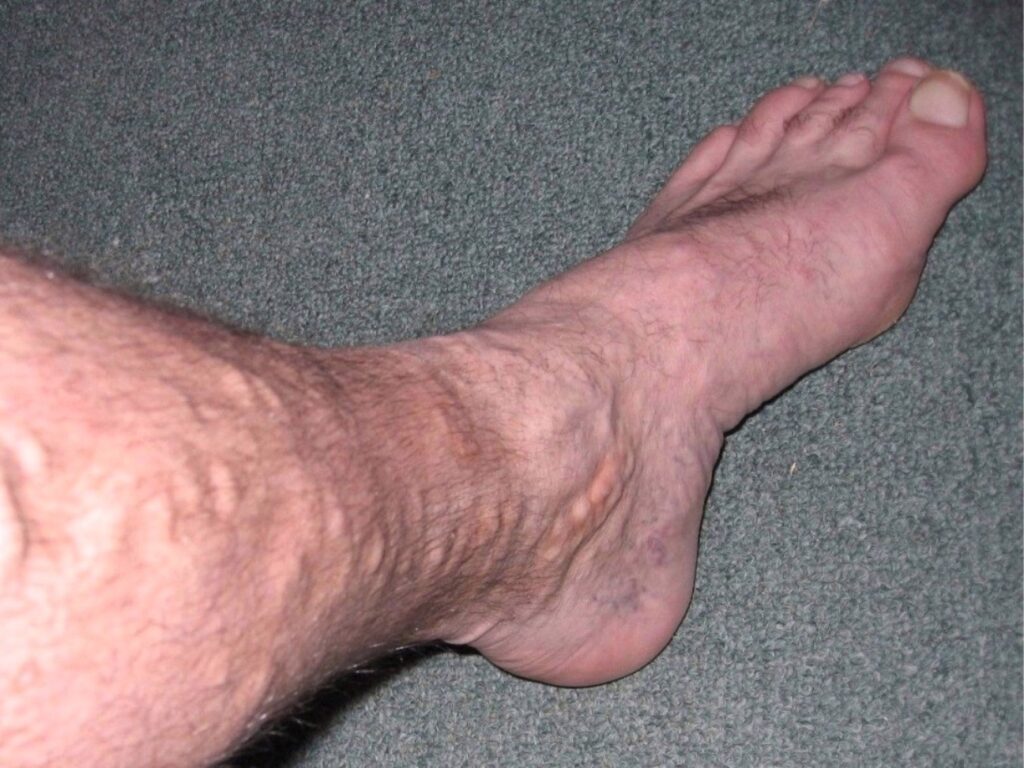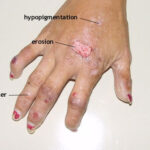Varicose veins are enlarged, twisted veins that typically appear on the legs and feet due to weakened or damaged vein valves. These dysfunctional valves lead to chronic venous insufficiency, where blood pools in the veins rather than returning efficiently to the heart. While often perceived as a cosmetic issue, varicose veins may cause discomfort, pain, and serious vascular complications if left untreated.

Key Causes and Risk Factors of Varicose Veins
Varicose veins develop when the one-way valves in the veins fail, causing blood to flow backward and pool, leading to vein enlargement. Contributing factors include:
- Genetics – Family history significantly increases risk.
- Prolonged Standing or Sitting – Occupations involving long hours on feet.
- Age – Natural wear and tear on vein valves over time.
- Gender – Hormonal changes during pregnancy, menopause, or birth control usage make women more susceptible.
- Obesity – Increased pressure on lower limb veins.
- Sedentary Lifestyle – Reduced circulation contributes to valve dysfunction.
Recognizing the Symptoms of Varicose Veins
Symptoms may vary from mild to severe and include:
- Visible bulging, twisted veins—often blue or purple
- Leg aching, heaviness, or throbbing
- Swelling around ankles or lower legs
- Burning or itching sensation over the affected vein
- Skin discoloration or ulceration in advanced stages
Complications such as superficial thrombophlebitis or venous ulcers can occur in chronic cases, requiring medical intervention.
Diagnosing Varicose Veins: Clinical and Imaging Techniques
Effective diagnosis combines physical examination and imaging to evaluate valve function and vein structure:
Clinical Examination
- Visual inspection in standing position
- Palpation of veins
- Assessment of skin changes or edema
Duplex Ultrasound
- Gold-standard diagnostic tool
- Assesses blood flow direction, valve competency, and presence of clots
Other imaging tools, such as CT venography or MRI, are reserved for complex venous disorders or pre-surgical planning.
Treatment Options for Varicose Veins
Conservative Management
Initial management focuses on symptom relief and halting disease progression:
- Compression Stockings – Improve venous return and reduce swelling
- Leg Elevation – Encourages gravity-assisted drainage
- Exercise – Promotes circulation and strengthens calf muscles
- Weight Management – Reduces venous pressure
Minimally Invasive Procedures
Modern vein treatments are effective, safe, and often performed on an outpatient basis:
Endovenous Laser Ablation (EVLA)
- Uses laser energy to seal off faulty veins
- Performed under local anesthesia
- Quick recovery, minimal scarring
Radiofrequency Ablation (RFA)
- Similar to EVLA, but uses heat via radiofrequency
- High success rate and minimal post-op discomfort
Sclerotherapy
- Injection of sclerosant to collapse and fade smaller varicose or spider veins
- Multiple sessions may be required
Foam Sclerotherapy
- Foamed sclerosant improves vein wall contact
- Suitable for larger veins
VenaSeal™ Closure System
- Medical adhesive seals the vein
- No compression stockings required post-procedure
Surgical Interventions
For extensive or recurrent varicose veins:
High Ligation and Stripping
- Surgical removal of the affected vein
- Requires general or spinal anesthesia
Ambulatory Phlebectomy
- Small punctures remove surface veins
- Typically used for superficial varicose veins
Varicose Veins and Lifestyle: Prevention and Long-Term Management
Although some risk factors are unavoidable, lifestyle changes can help prevent or delay the onset of varicose veins:
- Stay Active – Walking, swimming, and cycling improve circulation
- Avoid Prolonged Sitting or Standing – Take breaks to move around
- Maintain Healthy Weight – Reduces venous pressure
- Elevate Legs Periodically – Facilitates venous return
- Wear Compression Garments – Particularly during long travel or pregnancy
When to Consult a Vein Specialist
Prompt evaluation by a vascular surgeon or phlebologist is advised if:
- Pain, swelling, or skin changes are present
- Veins become ulcerated or bleed
- Conservative methods fail to relieve symptoms
- There is a history of thrombosis or recurrent varicosities
Early intervention leads to better outcomes and reduces the risk of complications.
Varicose Veins in Pregnancy
Pregnancy increases blood volume and decreases venous return due to hormonal and anatomical changes. To manage varicose veins during pregnancy:
- Wear graduated compression stockings
- Sleep on the left side to reduce pressure on the vena cava
- Elevate legs frequently
- Engage in low-impact exercise
Postpartum, many pregnancy-induced varicose veins improve naturally, though persistent cases may require treatment.
Varicose veins are more than a cosmetic issue—they signify underlying venous dysfunction that can lead to chronic complications if left unaddressed. Through early diagnosis, lifestyle modification, and modern treatment techniques, varicose veins can be effectively managed, restoring both appearance and vascular health. Widespread awareness and access to minimally invasive options now make it possible to treat varicose veins with minimal downtime and maximum effectiveness.

